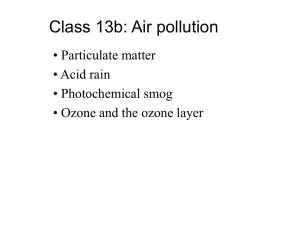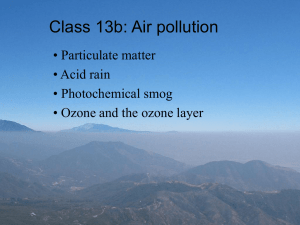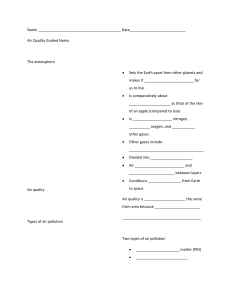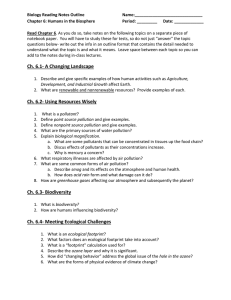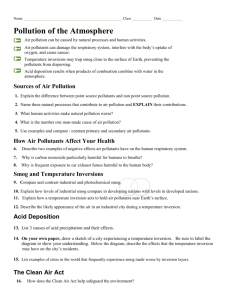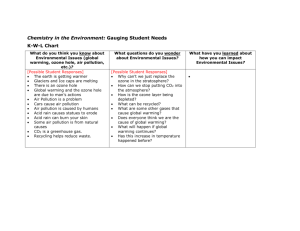APES Water & Air Pollution Review Sheet CH 14-15
advertisement
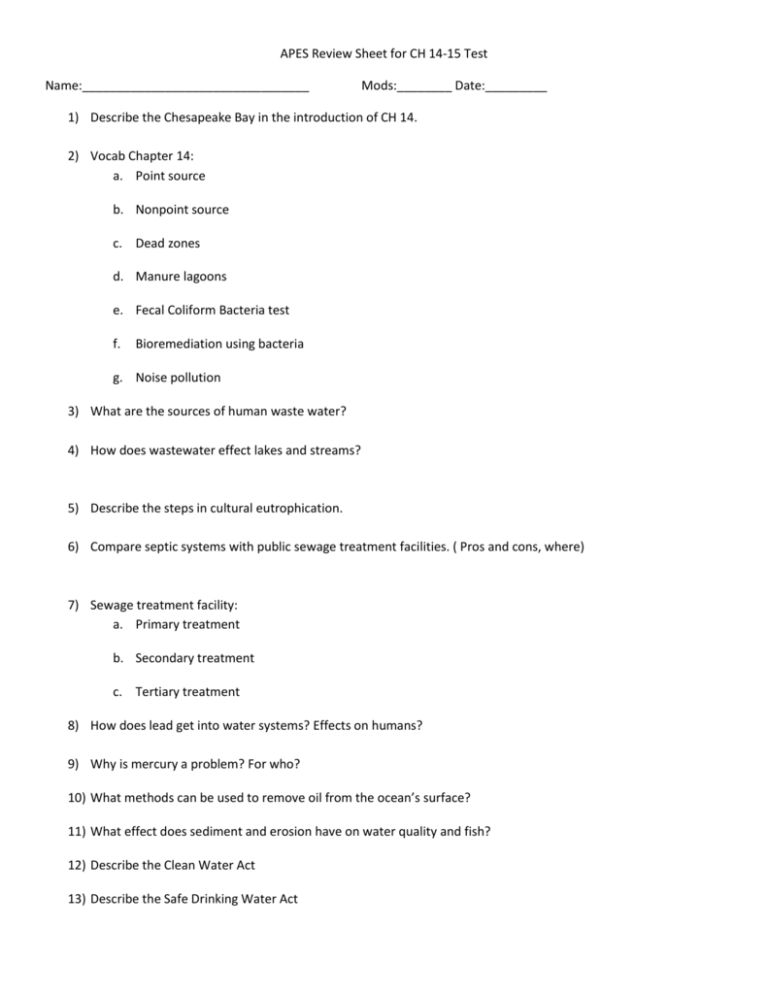
APES Review Sheet for CH 14-15 Test Name:_________________________________ Mods:________ Date:_________ 1) Describe the Chesapeake Bay in the introduction of CH 14. 2) Vocab Chapter 14: a. Point source b. Nonpoint source c. Dead zones d. Manure lagoons e. Fecal Coliform Bacteria test f. Bioremediation using bacteria g. Noise pollution 3) What are the sources of human waste water? 4) How does wastewater effect lakes and streams? 5) Describe the steps in cultural eutrophication. 6) Compare septic systems with public sewage treatment facilities. ( Pros and cons, where) 7) Sewage treatment facility: a. Primary treatment b. Secondary treatment c. Tertiary treatment 8) How does lead get into water systems? Effects on humans? 9) Why is mercury a problem? For who? 10) What methods can be used to remove oil from the ocean’s surface? 11) What effect does sediment and erosion have on water quality and fish? 12) Describe the Clean Water Act 13) Describe the Safe Drinking Water Act CH 15 Review 1) How does Chattanooga’s location make it susceptible to air pollution? 2) Vocabulary: Describe the problems a. Particulate matter b. Ground level ozone c. Thermal Inversions 3) List the six criteria pollutants 4) Why was the Montreal Protocol necessary? What pollutant was addressed? 5) Can SO2 be created naturally? _________If so how? 6) NOx a. What forms is it found in? b. How is it created? c. Why is it a problem? d. Where does it interact with ozone? 7) CO a. How is it created? b. Why is it a problem? 8) How is haze created? 9) How is smog created in LA? 10) How is smog created in London? 11) What metal is created by burning coal?______________________________________ 12) What is the difference between primary and secondary pollutants? 13) Describe the steps in the formation of acid rain. 14) Catalytic converters decrease _______ and _________. 15) T/F Lowering the temperature of burning coal reduces NOx emissions. 16) ________ and ________ are absorbed by the natural ozone cycle. What anthropogenic chemical breaks down stratospheric ozone? 17) Describe the problems associated with indoor air pollution. a. Developing or developed countries b. More or less deaths than outdoor air pollution c. CO d. Asbestos e. Radon f. VOC g. Syndrome? 18) Where is ozone beneficial?_______________ where is it dangerous?________________________
